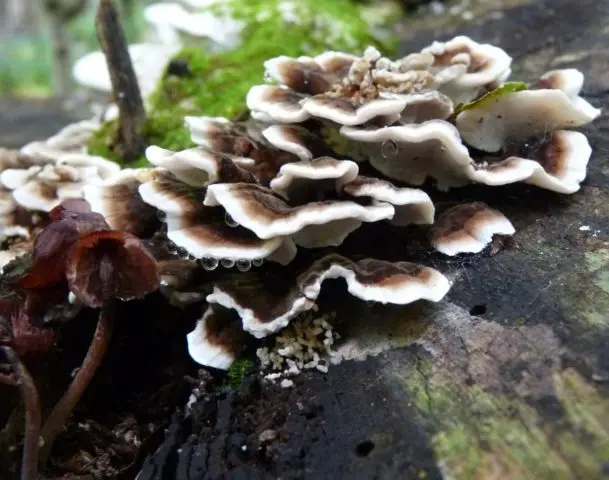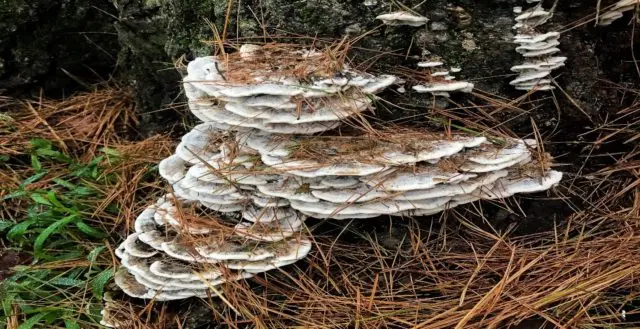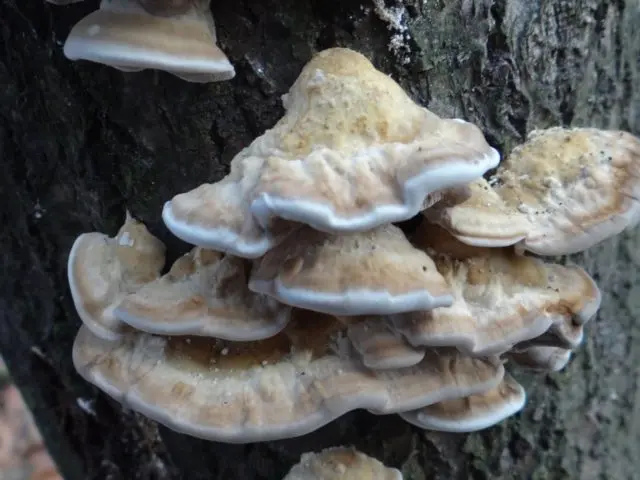Contents
Bjerkandera singed is a member of the Meruliev family, whose Latin name is bjerkandera adusta. Also known as scorched tinder fungus. This mushroom is one of the most common in the world. In the process of maturation, it forms beautiful outgrowths.
Where does bierkandera singed grow
The fruits of the bierkander body are annuals, they can be found throughout the year. They grow on old stumps, dead wood or fallen trees. Such barely noticeable outgrowths on a tree can be found not only in the forest belt, but also in the city or even on a personal plot. They settle on old or almost dead trees, causing white rot, which provokes the decomposition and death of wood.
What does a singed bierkander look like

This species is distinguished by a rather thin hymenophoric layer.
At the initial stage of its development, the fruiting body of Bierkander singed is presented as a whitish sinter formation on dead wood. Quite quickly, the central part begins to darken, the edges fold back and the fungus acquires a shapeless cantilever shape. The so-called caps are leathery, reach a diameter of 2-5 cm, and a thickness of about 5 mm. In most cases, the fruits grow together. The surface is felted, pubescent, initially white, later it acquires gray-brown shades, due to which it begins to correspond to its name.
The hymenophore is presented in the form of small pores, separated from the sterile part by a noticeable thin strip. Painted in ashy color, as it ages, it becomes almost black. Spore powder whitish.
The flesh is leathery, firm, gray in color.
Is it possible to eat singed bierkander
Although some sources classify this specimen as an edible mushroom, this information is unreliable.
Due to the hard pulp, this fruiting body is not eaten. Most sources classify the mushroom as an inedible gift of the forest, so mushroom pickers bypass it.
Similar species

The fruiting body is very variable, it radically changes shape and color throughout its life.
By external signs, the described mushroom is similar to the smoky beekandera. This copy is also inedible. It differs from the singed one in a thicker hat, the diameter of which is about 12 cm, and the thickness is about 2 cm.

The surface of the fruiting body at a young age is colored yellowish, as it grows older it acquires brown shades.
Conclusion
Berkander singed is widespread throughout the continent, and therefore this gift of the forest is actually known to almost every mushroom picker. They called it singed, because during development, the edges of the cap turn from white to gray-brown and look as if they were burned.









